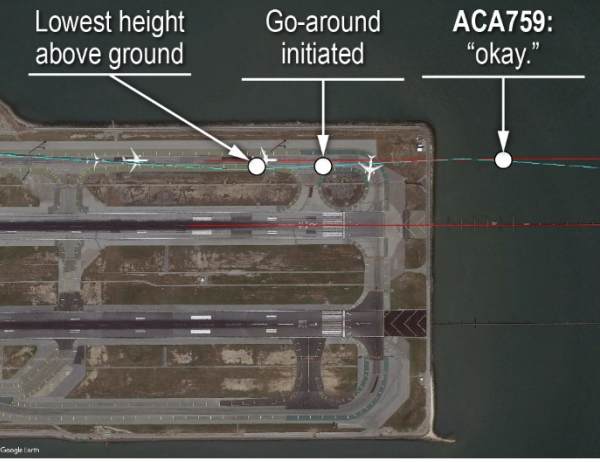‘Where is that guy going? He’s on the taxiway’: How too much information nearly caused an aviation disaster

In the unlikely event you find yourself aboard a plane flying to Wales before the end of April, you should discover the Welsh terms for “a new continuous cough, a high temperature or a loss of, or change in, normal sense of taste or smell”.
That is one stipulation of a “Notam” that applies to all passenger flights into Wales up to 29 April: a mandatory Welsh-language announcement about Covid.
Notam is short for a NOTice to AirMen. This disrespectfully gender-specific term is defined by the Federal Aviation Administration (FAA) as “a notice containing information essential to personnel concerned with flight operations but not known far enough in advance to be publicised by other means”.
The personnel concerned, whether male or female, are pilots. I wonder how many of them have complied with the instruction that a 150-word onboard message about coronavirus precautions is delivered “in English, Welsh and an officially recognised language of the country of departure”?
It is quite right that national languages should be respected and used. But other channels – such as talking to airline managers – could be used for communicating the requirement, rather than supplying the instruction alongside flight-critical information.
The existence of this weighty Notam means yet more guff for airmen and women to wade through as they carry out their duty to fly us safely and professionally. And adding to their pre-flight burden is not a zero-risk issue.
This is brought home by the National Transportation Safety Board (NTSB) report into the Air Canada flight 759 incident in July 2019.
Close to midnight, a tired flight crew approached San Francisco at the end of a five-hour flight from Toronto. They were instructed to land on runway 28 right. From experience they knew that SFO had, like many airports, parallel runways on this approach. They saw what looked like a pair of runways ahead and lined up for the right-hand one.
“Where is that guy going?” The captain of United flight 1 raised the alarm as AC759 flew straight towards the taxiway he was occupying.
Moments later, as the Air Canada Airbus A320 flew over his plane at just 100ft, he added: “He’s on the taxiway.”
At that instant the first officer on the Air Canada flight deck called for a “go around” and the captain began the manoeuvre, applying full power to take their plane away from the danger they had unwittingly created.
But in the split seconds while the aircraft continue to descend, they flew over Philippine Airlines flight 115 – full of people and fuel for the 7,000-mile trip to Manila – at an altitude of just 60ft.
Fifteen minutes later the Air Canada plane landed safely on runway 28 right. Its twin, 28 left, was closed and the lights had been switched off.
You can perhaps see how weary pilots who were unaware of the closure might confuse a runway and parallel taxiway for left and right runways – and come terrifyingly close to disaster.
Surely they should have been told the very important fact that a runway at their destination was closed?
Well, they were. But the closure was well camouflaged in the middle of a big wad of words.
“The presentation of that information did not effectively convey the importance of the runway closure information and promote flight crew review and retention,” the report concludes.
“The flight release package was 27 pages long and consisted of, among other items, route, weather, and Notam information.
“The Notam indicating the runway 28L closure (’RWY 10R/28L CLSD’) appeared on page 8 of the package, which was also the second page of Notam information.”
A well-known phenomenon, “serial position effect”, describes how people are better at remembering the first and last items in a series rather than the stuff in the middle.
The incident report said: “This issue has affected other pilots, indicating that all pilots could benefit from the improved display of flight operations information.”
At last the International Civil Aviation Organisation (ICAO) is starting to reduce the guff overload.
Mark Zee, a former pilot and air traffic controller, has been campaigning for years to reduce the burden on flight crew, and ICAO is taking note.
“It is not uncommon for a pre-flight briefing package supporting a long-haul international flight to contain more than 100 pages of Notam information,” says the organisation – adding that one in five of these notices has past its three-month applicability period.
Mr Zee, who runs the OpsGroup, says that eliminating these will lead to “a potential decrease of 7,000 Notams per month, and a 20 per cent reduction in the size of the average briefing packet.”
Passenger aviation is astonishingly safe – but the Air Canada incident demonstrates the unintended consequence of an abundance of “safety” information. In any language.
Read More
‘We’re heading in the right direction’, Stanway says after Lioness loss to Canada

 Yahoo Movies
Yahoo Movies 